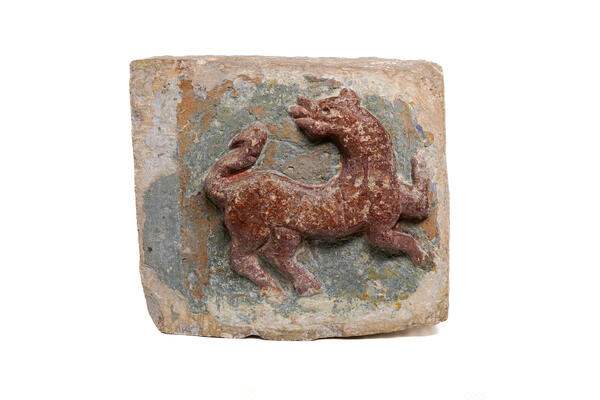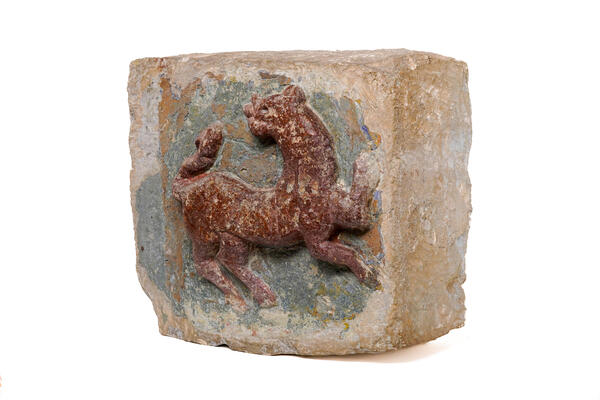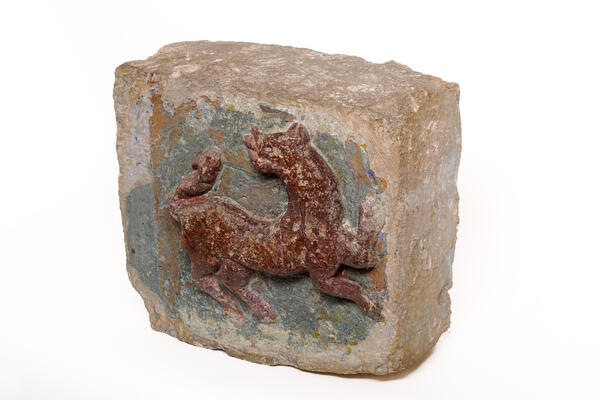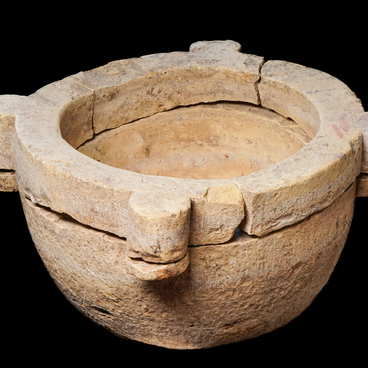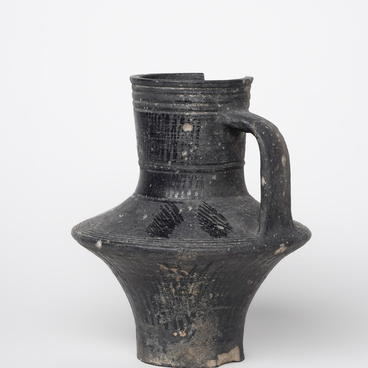There is an ancient сhurch of the Conception of St John the Baptist near Kolomna. The church was built in the former bishop’s village of Gorodishche, of roughly hewn white stone and rubble. Researchers date the church to the 14th century. The lower part of the temple is the oldest construction that survived on the territory of the Moscow region. The walls of the quadrangle, about half of its height, and the walls of the apses have been preserved from this most ancient structure.
Since its foundation, the church has been repeatedly renovated and embellished thanks to the commitment of Kolomna’s donors. The Kolomna records preserve the names of the merchants who sponsored the church. In the middle of the 19th century, the merchant I. P. Ponomarev donated “a silver plating for the icon of the Beheading of John the Baptist”; the merchant F. S. Alekseev donated “the Gospel and 570 rubles”; the merchant E. G. Ponomarev donated “platings and a sticharion”.
The Church of St John the Baptist is interesting not only for its history and architecture, but also for its mystery — a relief depicting a wondrous beast. The original block with the relief on it is now housed in the city’s Museum of Local History, while a copy has been placed in the wall of the church. Some researchers (B. L. Altshuller) call the depicted creature a unicorn, others (Professor A. I. Nekrasov) believe that the carved slabs with the image of dragons of Gorodischensky and Vladimirsky types are the coats of arms of the Suzdal princes. This relief is popularly called the “Batu’s Stamp”, and it is still one of the symbols of Kolomna. It is associated with a large number of local legends and tales. A legend says that the stone is related to the beginning of the Mongol invasion of Russia and the gory battle near Kolomna.
According to legend has it that Batu ordered to place a guard stone with the image of the beast on the grave of Roman, the Russian prince of Ryazan killed in the battle, so that the Mongols did not dare to desecrate it later, therefore the beast was preserved in popular memory as the “Batu’s stamp” and has survived in the ancient masonry of the church in Gorodyshche. Experts tend to see the unicorn as an ancient heraldic and protective symbol of Kolomna.
It was the one that was embossed on the city’s earliest coins. The image of the unicorn was particularly popular during the reigns of Basil III, Ivan the Terrible and the first Romanovs.
Since its foundation, the church has been repeatedly renovated and embellished thanks to the commitment of Kolomna’s donors. The Kolomna records preserve the names of the merchants who sponsored the church. In the middle of the 19th century, the merchant I. P. Ponomarev donated “a silver plating for the icon of the Beheading of John the Baptist”; the merchant F. S. Alekseev donated “the Gospel and 570 rubles”; the merchant E. G. Ponomarev donated “platings and a sticharion”.
The Church of St John the Baptist is interesting not only for its history and architecture, but also for its mystery — a relief depicting a wondrous beast. The original block with the relief on it is now housed in the city’s Museum of Local History, while a copy has been placed in the wall of the church. Some researchers (B. L. Altshuller) call the depicted creature a unicorn, others (Professor A. I. Nekrasov) believe that the carved slabs with the image of dragons of Gorodischensky and Vladimirsky types are the coats of arms of the Suzdal princes. This relief is popularly called the “Batu’s Stamp”, and it is still one of the symbols of Kolomna. It is associated with a large number of local legends and tales. A legend says that the stone is related to the beginning of the Mongol invasion of Russia and the gory battle near Kolomna.
According to legend has it that Batu ordered to place a guard stone with the image of the beast on the grave of Roman, the Russian prince of Ryazan killed in the battle, so that the Mongols did not dare to desecrate it later, therefore the beast was preserved in popular memory as the “Batu’s stamp” and has survived in the ancient masonry of the church in Gorodyshche. Experts tend to see the unicorn as an ancient heraldic and protective symbol of Kolomna.
It was the one that was embossed on the city’s earliest coins. The image of the unicorn was particularly popular during the reigns of Basil III, Ivan the Terrible and the first Romanovs.

